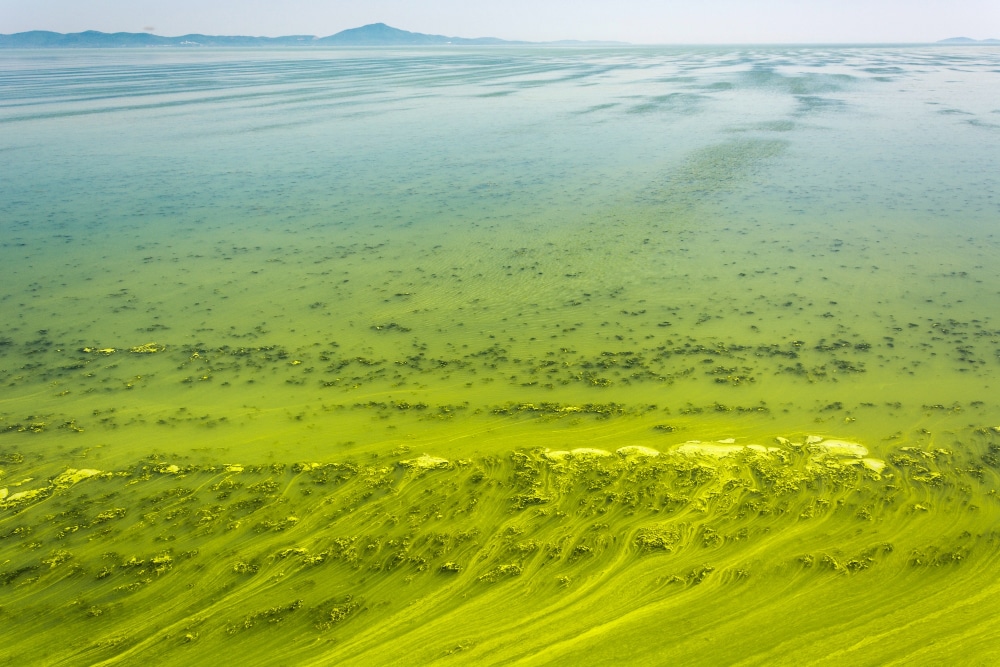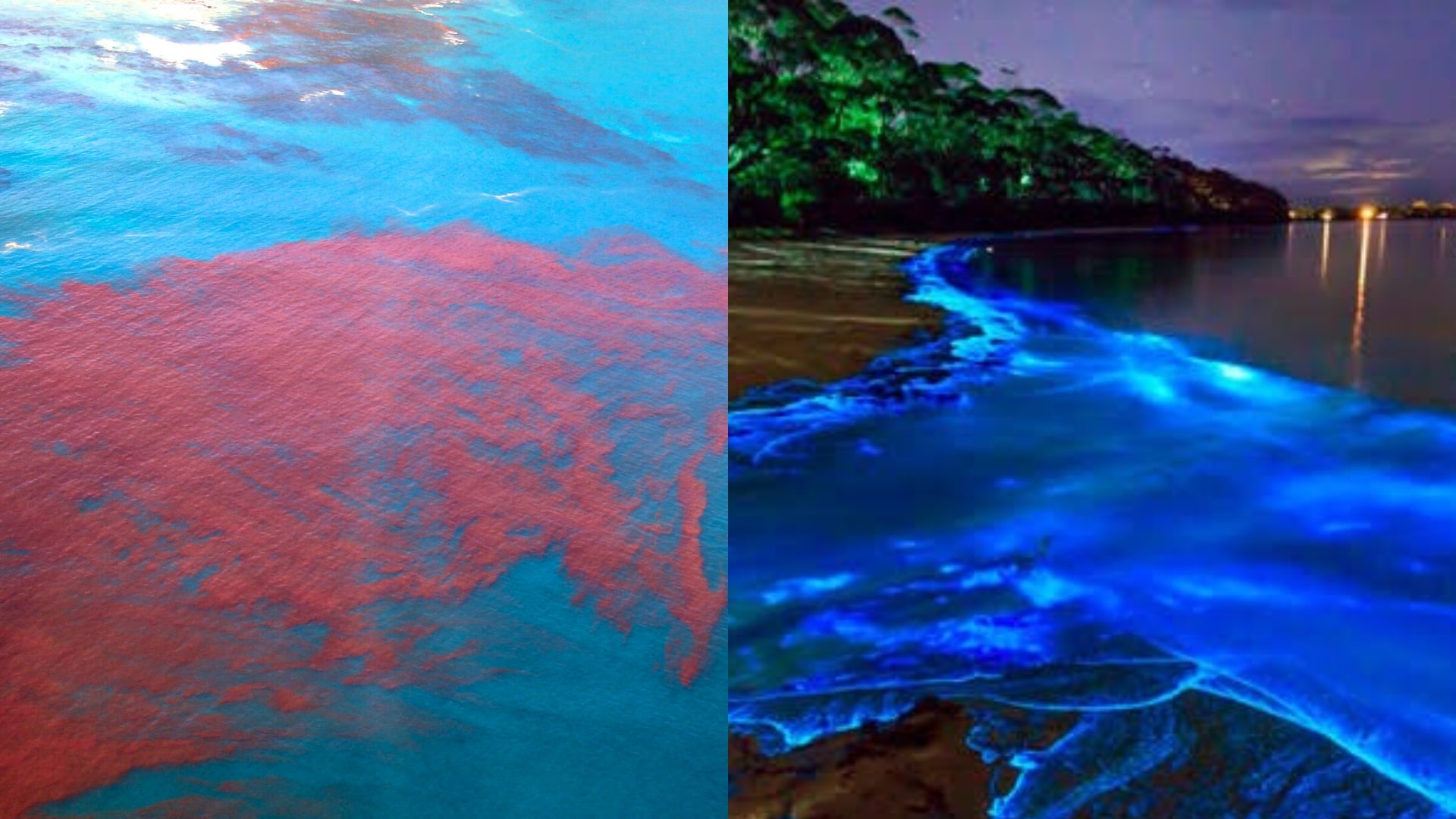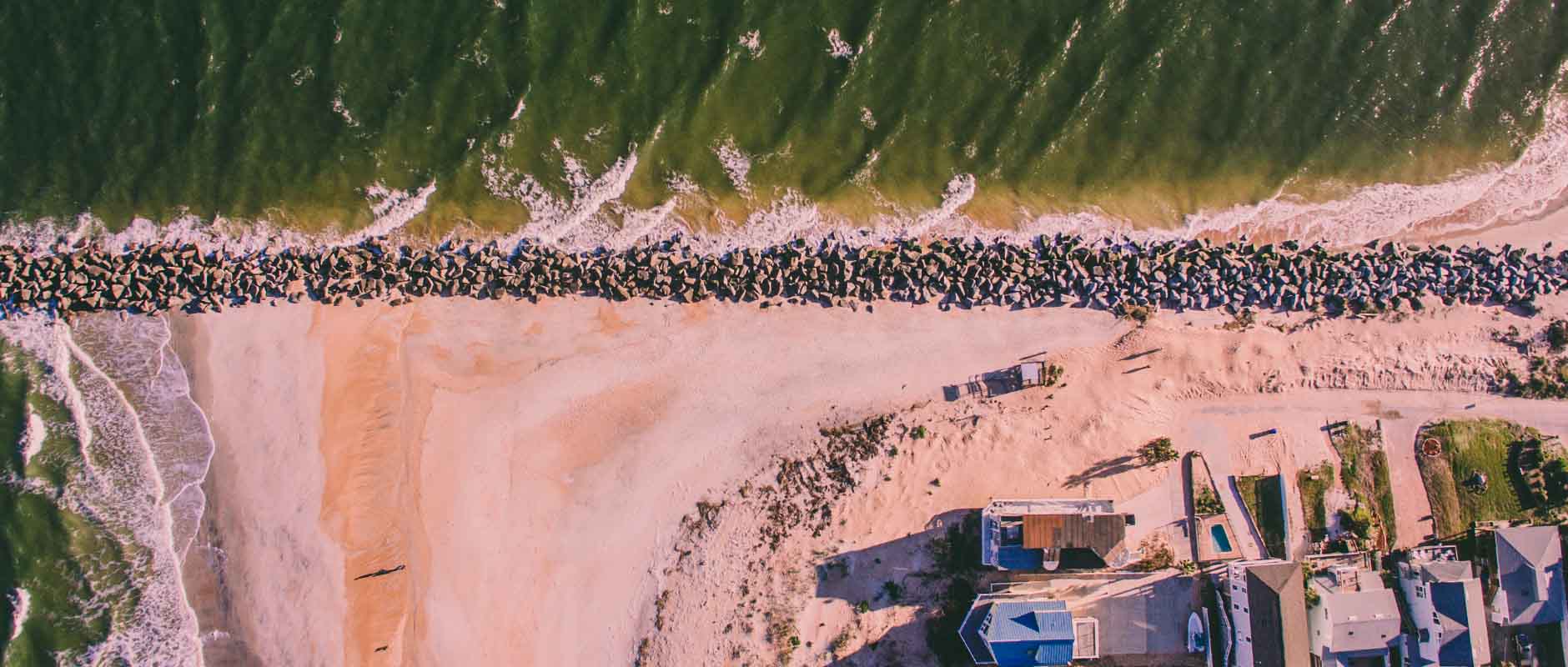Introduction to Harmful Algal Blooms
Once again, Florida residents prepare for red tide, a harmful algal bloom that damages marine life and human health. Caused by specific algae, red tide discolours water and releases toxins. Blue-green algae, another harmful bloom, causes similar issues. Green tides, linked to nutrient pollution, pesticides, and human activities, disrupt marine ecosystems and are transported by ocean currents, complicating control efforts. The blue tide environmental impact also raises concerns, as these blooms affect water quality and biodiversity. This article explores the differences and similarities between red tide, blue-green algae, and green tides, highlighting their causes and effects to help safeguard communities. Despite various control options, managing green tide outbreaks remains a complex subject requiring ongoing review and action.
Harmful algal blooms have become a pressing environmental issue, especially in regions like the Yellow Sea, where the green tide phenomenon has drawn increasing attention. Researchers estimate that green tide affects an average area reaching thousands of square kilometres during peak events, demonstrating its rapid expansion power. These outbreaks, driven by the rapid growth of Ulva prolifera, occur annually in the southern Yellow Sea, covering a vast space of sea surface areas with dense mats of floating algae. Satellite and field data clearly show that the extent of green tide blooms has increased over recent years. In recent years, there has been a notable increase in the frequency and severity of green tide events. The impact of green tides extends beyond their striking appearance; they disrupt the ecological environment, threaten marine biodiversity, and cause significant economic losses to local industries such as tourism and aquaculture.
Understanding Green Tide Dynamics in the Yellow Sea Region
One of the most extensively studied regions experiencing recurring green tide outbreaks is the Yellow Sea. Environmental aspects such as ocean currents, wind forces, and water quality variance shape the complexity of a green tide outbreak here. These factors influence the rapid expansion and transport of green tide patches, making prediction and control challenging. Scientists have performed advanced monitoring using satellite remote sensing and geostationary ocean color imagers to track floating algae development, with many findings based on satellite data and specific analytical models. Supported by the National Natural Science Foundation, research has specifically focused on alternative floating algae indices and improving green tide information extraction methods. This progress has brought more effective monitoring, offering valuable insights into green tide dynamics to support ecological balance in the region and the whole industry linked to it, encouraging ongoing control and understanding of this fine environmental phenomenon.

What is Red Tide?
Karenia brevis, a type of algae that produces toxins harmful to humans and marine life, causes the dangerous algal bloom known as red tide. It can cause respiratory problems, skin irritation, and even death in some cases. The pigments in the algae give the water a reddish-brown color, and the bloom can discolor the water, making it look brown or red. The toxins in the water can cause fish kills, where large numbers of fish die off as a result, leading to significant damage to the whole industry linked to fishing and tourism.
Red tide is a natural occurrence that happens when the water conditions are right for algae to grow quickly. This can happen when there are high levels of nutrients in the water, like agricultural runoff or sewage discharge, or when the water temperature is warm. The blooms can last for weeks or months, hurting the local economy by driving tourists away and making seafood unfit for consumption.
Like red tide, blue-green algae naturally occurs and high levels of nutrients in the water from sources like agricultural runoff or sewage discharge trigger its growth. Additionally, human activities such as damming rivers cause blue-green algae blooms by changing the water flow and temperature, which creates favorable conditions for algae growth. These blooms can last for weeks or even months, causing serious environmental and economic impacts that are generally difficult to control.
Differences and Similarities
Although both red tide and blue-green algae are harmful algal blooms that can have similar health effects, there are some differences between them. For example, red tide is caused by Karenia brevis, while blue-green algae is caused by cyanobacteria. Red tide typically occurs in saltwater environments, while blue-green algae can grow in both freshwater and saltwater. A bloom occurring in saltwater means that marine life and coastal communities are at greater risk, while a bloom in freshwater means that lakes, rivers, and drinking water sources may be affected. Red tide usually creates reddish-brown water, while blue-green algae cause a green or blue-green hue.
However, both algal blooms can produce dangerous toxins that can harm human health and cause fish kills and environmental damage. Both are triggered by high nutrient levels in the water and can be exacerbated by human activities such as agricultural runoff and sewage discharge.
Health Impact on Humans and Disease Links
Although the health effects of red tide and blue-green algae are similar, they can vary in severity depending on the individual and the concentration of toxins in the water. Breathing in red tide toxins can cause respiratory issues like coughing, wheezing, and shortness of breath, while exposure to blue-green algae can lead to skin irritation, nausea, vomiting, and severe liver damage. Ingesting seafood contaminated with either type of bloom can also cause gastrointestinal problems.
It’s important to note that not everyone will experience health effects from these blooms, and certain groups such as children, elderly individuals, and those with pre-existing respiratory or immune system issues may be more susceptible. Additionally, green tide outbreaks can be accompanied by the spread of disease among marine organisms due to oxygen depletion and habitat disruption. Recognising the blue tide environmental health risks can help communities prepare and respond effectively to bloom events.

Remote Sensing, Monitoring, and Routes of Transport
The rapid rise of remote sensing technology has transformed how scientists monitor and respond to large-scale green tide events. Using WaterWindow by LG Sonic, researchers can now observe the spatial distribution, maximum coverage area, and surface behavior of floating algae patches with unprecedented clarity.
This platform provides critical bloom characteristics that support early detection and targeted control measures. Researchers often organize these data in a table to facilitate analysis and interpretation. While satellite imaging offers broad overviews, environmental factors like cloud cover can block visibility, making consistent data from WaterWindowessential when traditional methods fall short. Furthermore, integrating blue tide environmental data into monitoring platforms encourages the ability to predict bloom development and potential impacts.
The transport of green tide algae follows specific routes influenced by ocean currents and wind patterns. These routes determine the spread of blooms across borders and coastal regions, complicating control efforts and requiring international cooperation for effective management. Half of the affected coastal areas rely on open communication and data sharing to manage these blooms effectively.
Safety and Control Measures
If you live in an area affected by red tide or blue-green algae green tide blooms, take precautions to protect yourself and loved ones. In addition to personal safety measures, consider supporting or participating in actions such as implementing agro-environmental practices or land management measures like land cover modifications and intercropping to help reduce nutrient runoff and pollution that contribute to harmful algal blooms. Avoid swimming or fishing in discolored or odorous water, common signs of harmful algal blooms. If contact occurs, rinse off with fresh water immediately.
If you experience symptoms like coughing, wheezing, skin irritation, or gastrointestinal issues after exposure, seek medical attention promptly. Healthcare providers can determine the best treatment and monitor symptoms to prevent complications.
Beyond Individual Action: Addressing the Root Causes and Rules for Management
It’s crucial for communities to act to address the underlying causes of harmful algal blooms by reducing nutrient pollution from agricultural runoff and sewage discharge, implementing better water management practices, and supporting monitoring programs to better investigate and control these blooms. Tackling the blue tide environmental causes at the source is essential to mitigate long-term impacts on ecosystems and public health.
Effective management requires establishing clear rules and guidelines for pollution control, land use, and agricultural practices. Coordinated efforts between local, state, and federal agencies, as well as international cooperation in affected states and regions, are necessary to enforce these rules and reduce green tide occurrences. Proceeding with these measures will turn the tide against harmful blooms.
Causes of Green Tides: Environmental and Human Factors
Environmental conditions such as water temperature, light availability, and nutrient levels play a significant role in the development and persistence of green tides. For instance, increased light and warmer temperatures can enhance the growth rate of Ulva prolifera, contributing to the bloom’s rapid expansion and transport across a wide range of coastal regions. Human activities, including the use of pesticides and fertilisers, continue to supply nutrients that fuel these blooms, making it nearly impossible to fully prevent them without coordinated efforts and control measures. Addressing these aspects is critical to reducing the blue tide environmental footprint and supporting healthier aquatic systems.
Notably, regions such as France have experienced significant green tide events that have impacted local economies and ecosystems, demonstrating the wide range of this phenomenon’s influence. The strength of these outbreaks often depends on a lot of environmental and human factors working in line, making control a complex thing to manage effectively.
Consequences and Future Solutions for Green Tides
Finally, while the challenge of controlling green tides remains significant, ongoing research and technological advances offer hope. We expect that with continued monitoring, improved management strategies, and stronger international cooperation, communities will be able to break the cycle of bloom proliferation and mitigate the impacts on marine ecosystems and coastal economies.
In conclusion, while red tide and blue-green algae cause harmful algal blooms with distinct water colours, both produce dangerous toxins that harm human health and marine ecosystems. By understanding the character and dynamics of green tides and taking coordinated action, including reducing nutrient pollution and encouraging sustainable land use, we can better protect our coastal environments and communities for the future.
